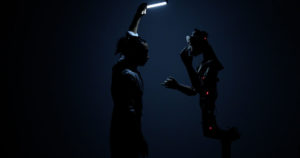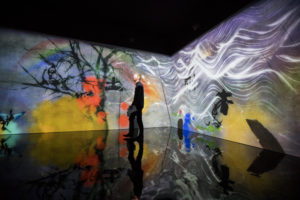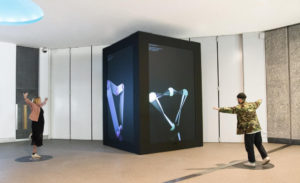At the Barbican Center in London, until August 26th, we will ask ourselves what it means to be human today, in a historical moment in which technology advances towards ever wider frontiers. This will take place thanks to the “AI: More than Human” exhibition-event, in which not only artists and curators are involved, but also technical partners such as IBM, Google Arts & Culture and Sony.
This is a trend in constant evolution as, until recently, the exhibitions in which art and science were intertwined, were not displayed in the most important galleries, but among niche circuits such as the Ars Electronica festival in Linz, Austria. They are undoubtedly themes that are fashionable, a trend that even the panorama of contemporary art institutions has begun to follow.
Developed in four areas, in “AI: More than Human” there is also a historical section, which creates a path from the past to the present day, to demonstrate the fact that these innovations and technological advances do not fall from the sky, they are not a pre-packaged from the 2000s. To cite a well known example also thanks to the large screen, it is sufficient to recall the first experiments with the machines carried out by Alan Turing. Art presents itself in London under its most disparate facets, moving from design to music and the fashion area.
The sections, which examine different aspects of Artificial Intelligence, are the following:
- The Dream of AI, in which the human desire to bring inanimate objects back to life, from antiquity to the present day, is brought to light, passing through Shintoism and alchemy;
- Mind Machines, a section that traces the historical evolution of AI from the first researchers who tried to convert rational thought into a code, to the creation of the first neural network in the 1940s;
- Data Worlds, on the other hand, makes clear the active and commercial role that artificial intelligence plays within contemporary society, a role that modifies our lives;
- Finally, Endless Evolution represents the section that looks more to the future, envisaging the creation of a sort of new species and thus focusing attention on how artificial laws can adapt to natural ones.
It is also important to remember how artists are now in fact true creators of new media, which come to light thanks to the inspiration drawn from technologies present in our daily life, such as Google Street View.
Not only society, therefore, but also those who are an integral part of it, as artists, can no longer ignore the fundamental and radical changes that new technologies such as artificial intelligence are bringing to our daily lives.
In my opinion the work Co(AI)xistence by the artist Justine Emard takes on an emblematic importance. The video of this installation plunges the viewer into a space-other, an alternative dimension: one remains in fact without words in observing the stupor painted on the face of the artificial alter-ego in observing the dance of lights performed by the Japanese actor and dancer Mirai Moriyama, a real and human astonishment similar to that of a child facing a reality that savors for the first time in his life.
Diego Drago
Info:
AI: More than Human
16 May — 26 Aug 2019
Barbican Centre
Silk Street, London




For all the images: AI: More than Human, installation view at Barbican Centre, London

is a contemporary art magazine since 1980






NO COMMENT